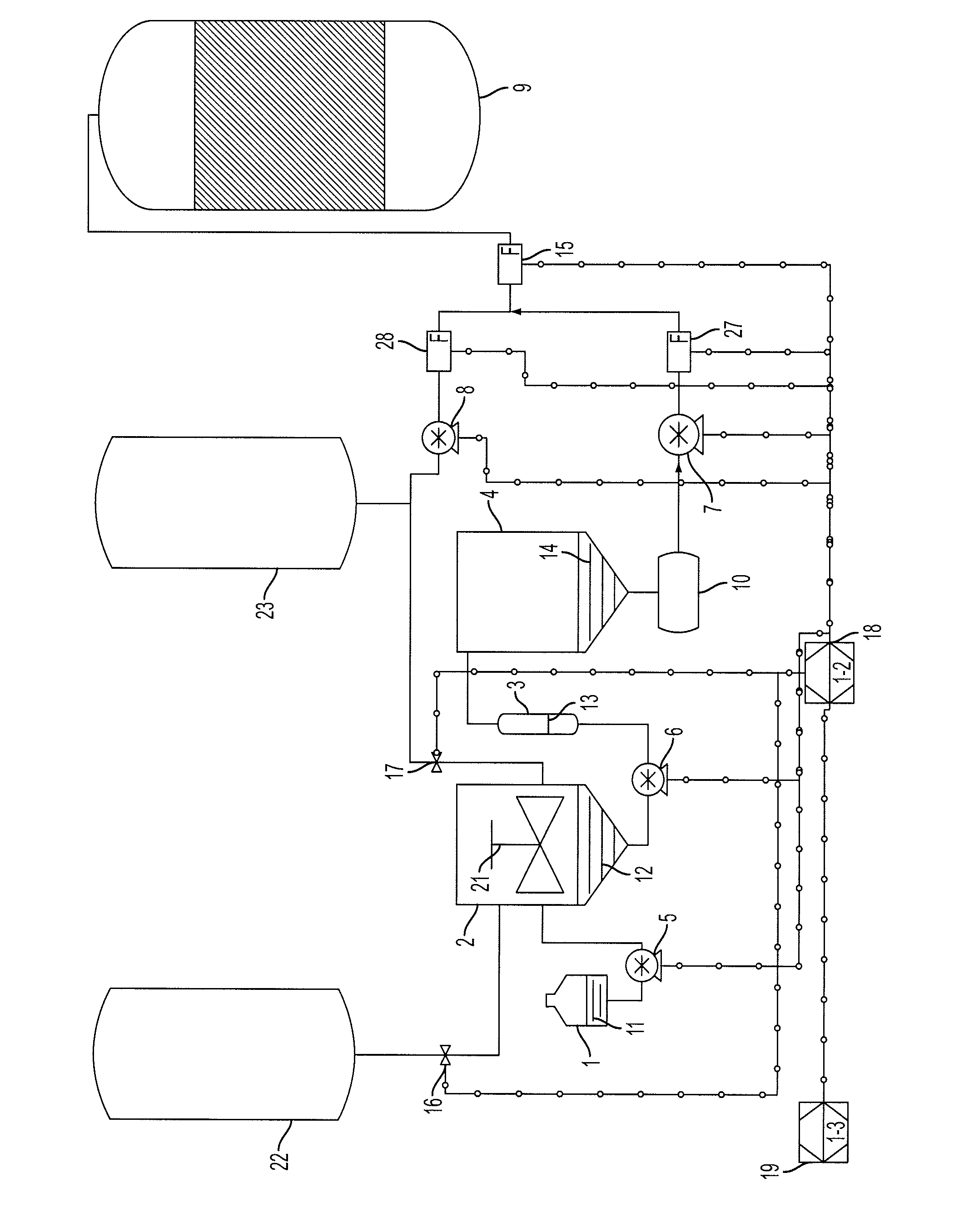Method and apparatus for producing alcohol or sugar using a commercial-scale bioreactor
a bioreactor and commercial technology, applied in the direction of enzyme production/based bioreactors, biomass after-treatment, enzyme stabilisation, etc., can solve the problems of reducing the yield of product and co-products, increasing the operating cost of fighting infections, and impairing process efficiency, so as to improve the cost-effectiveness of said stabilized enzyme preparations and hydrating them
- Summary
- Abstract
- Description
- Claims
- Application Information
AI Technical Summary
Benefits of technology
Problems solved by technology
Method used
Image
Examples
example 1
[0092]A reformulated enzyme solution was obtained by mixing 1 part Liquozyme SC DS, a stabilized alpha-amylase preparation from Novozymes, 9 parts water and 1 part propylene glycol at room temperature. This served to reduce the concentration of polymeric stabilizers as well as to reduce the concentration of salts and antioxidants. The inclusion of propylene glycol provides enough stability so that the enzyme solution can remain in a vessel until it is used, up to 100 hours. Said reformulated enzyme solution was passed through a column containing KDF-55, a copper-zinc alloy, and pumped to a vessel. Under normal operating conditions pure, non-reformulated Liquozyme SC DS with an alpha-amylase concentration of about 15 mg / mL is added to slurry and liquefaction tanks in a dry mill fuel ethanol plant at 68 ml / min (1020 mg / min) and 90 ml / min (1350 mg / min) respectively. In this example, 68 mL / min (1020 mg / min) of pure Liquozyme SC DS was added to the slurry tank; no change from normal oper...
PUM
| Property | Measurement | Unit |
|---|---|---|
| v/v | aaaaa | aaaaa |
| temperatures | aaaaa | aaaaa |
| temperatures | aaaaa | aaaaa |
Abstract
Description
Claims
Application Information
 Login to View More
Login to View More - R&D
- Intellectual Property
- Life Sciences
- Materials
- Tech Scout
- Unparalleled Data Quality
- Higher Quality Content
- 60% Fewer Hallucinations
Browse by: Latest US Patents, China's latest patents, Technical Efficacy Thesaurus, Application Domain, Technology Topic, Popular Technical Reports.
© 2025 PatSnap. All rights reserved.Legal|Privacy policy|Modern Slavery Act Transparency Statement|Sitemap|About US| Contact US: help@patsnap.com

